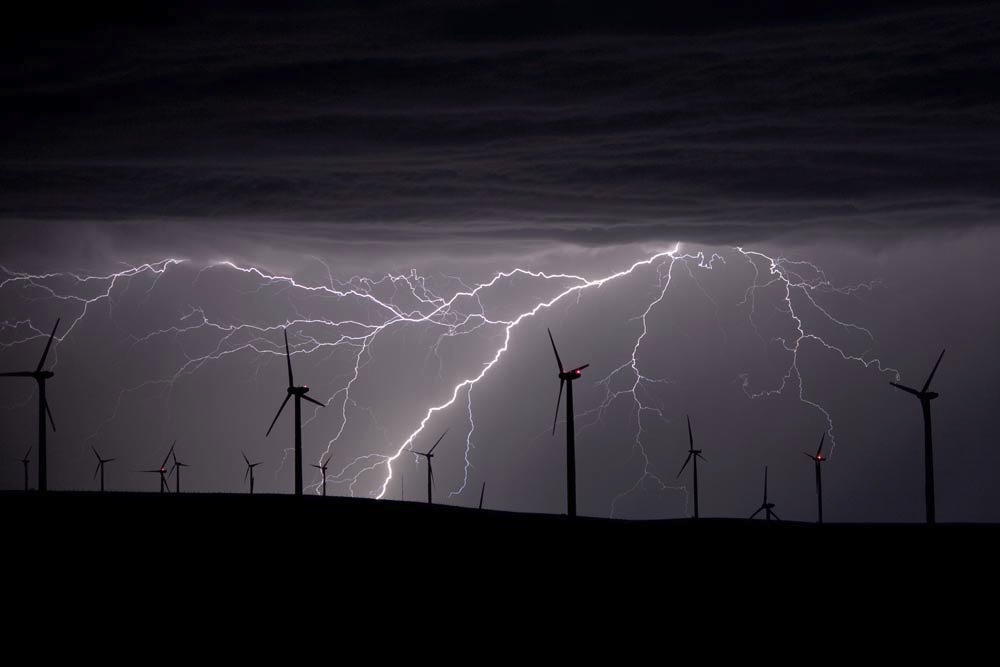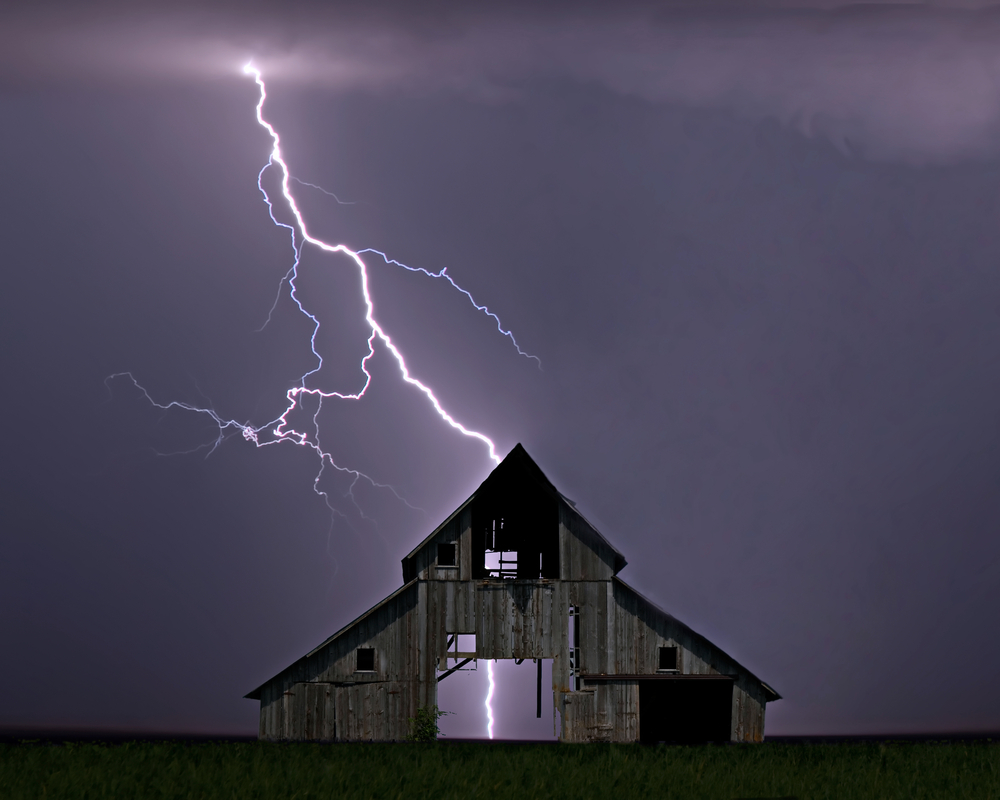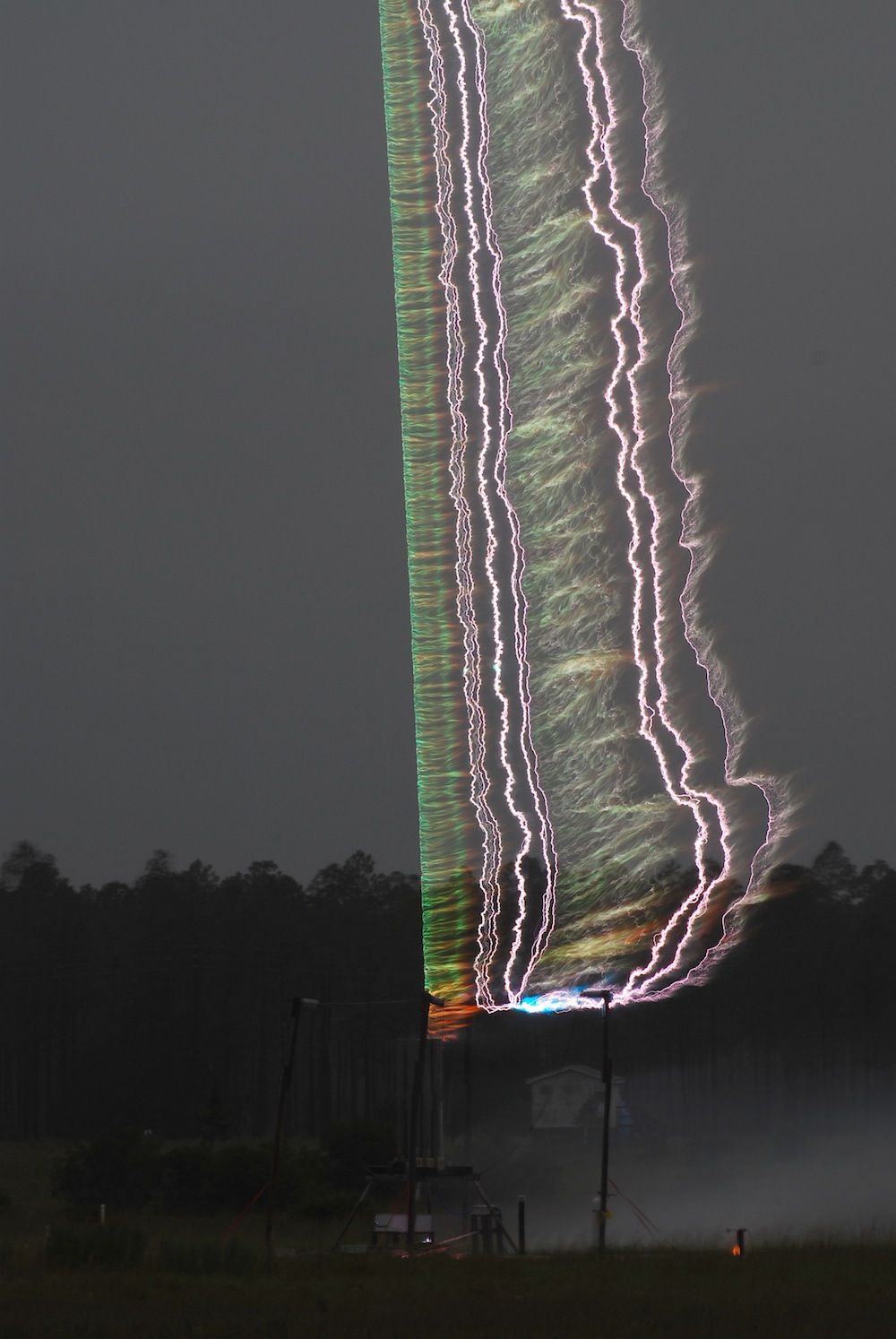
Incredible Technology: How to Map a Lightning Strike

Some scientists literally spend their time waiting for lightning to strike.
Lightning is the second highest cause of annual weather-related deaths in the United States, according to the National Weather Association. It starts fires, causes power outages and wreaks havoc on electronics systems.
The science of lightning detection has improved dramatically since Ben Franklin flew his kite in a thunderstorm in 1752. Researchers can now predict conditions that precede a bolt from the blue, and track the location and strength of a strike while it's occurring.
"We've made significant progress in understanding the physics of lightning, but there's still lot of work that can be done," said atmospheric scientist Phillip Bitzer of the University of Alabama in Huntsville.
Bolts from above
How lightning forms remains something of a mystery. The working hypothesis goes: When an updraft of warm air reaches a height where the temperature is just above freezing, ice crystals and frozen particles interact to produce an electric charge separation. When the electric field between the charges is great enough, an electrical breakdown — a lightning flash — occurs. [Infographic: The Mysteries of How Lightning Works]

The wrath of Zeus takes two forms: cloud-to-ground lightning and intra-cloud lightning. While lightning that strikes the ground poses the most direct threat to humans and infrastructure, lightning between or within clouds can provide warning of dangerous hail and tornadoes, said Kenneth Cummins, an atmospheric scientist at the University of Arizona, in Tucson.
Sign up for the Live Science daily newsletter now
Get the world’s most fascinating discoveries delivered straight to your inbox.
"We've gotten pretty good at being able to quantify the number of cloud-to-ground discharges in a region, and we're getting better at quantifying the number and nature of intra-cloud discharges," Cummins told LiveScience.
Lightning-sensing systems have been evolving since the time radios were developed around the turn of the 20th century, Cummins said. One of the most critical are lightning mapping arrays, which are networks of electromagnetic sensors that home in on the fiery flashes and measure the energy they release.
Lightning mapping
Three different systems capture lightning discharges over a range of different frequencies, which correspond to the energies being produced.
"The higher the frequency you go to, the smaller the object you get to image," Cummins said.
Very high frequency (VHF) arrays, collections of sensors that measure electromagnetic radiation, capture images of the fine branching structures of a lightning strike. VHF sensors operate in the range of 10 to 100 megahertz and are spaced close togetherAbout a dozen VHF arrays exist nationwide, including at the University of Alabama in Huntsville, New Mexico Tech, and the Kennedy Space Center in Florida.
By contrast, low frequency (LF) arrays image larger-scale lightning activity, such as the long channels of electricity in cloud-to-ground and intra-cloud flashes. These provide information about the energy released, in the form of electrical current in channels to ground. Lightning also produces energy in the form of light, heat and atomic energy such as X-rays and gamma rays. These arrays operate in the range of hundreds of kilohertz to a few megahertz. The National Lightning Detection Network (NLDN), a network of more than 100 low-frequency sensing stations around the United States, is widely used by researchers and provides vital monitoring for predicting severe weather.
At the broadest scale, very low frequency (VLF) arrays measure electromagnetic signals not just along the Earth's surface, but between the Earth and the ionosphere, the upper layer of the atmosphere that is electrically charged by solar radiation. These operate in the 5-to-30 kilohertz range, and are spaced thousands of kilometers apart. VLF arrays can detect lightning over land and oceans, where hurricanes and other storms develop. [Electric Earth: Stunning Images of Lightning]
Bitzer and his colleagues at the University of Alabama in Huntsville have developed a sensor that operates in the LF/VLF range and measures the change in electric field from a lightning discharge and converts it into a voltage. They protect the sensor from rain using an inverted metal dish. "It's literally a salad bowl — we got it from Target," Bitzer said.
These sensors give scientists a pretty good view of lightning on the ground, but to get a global view, why not observe it from space?
The University of Alabama scientists have also developed a satellite-based sensor that counts photons from low-Earth orbit. The satellite makes a lap around the planet every 90 minutes, giving scientists a picture of the amount and distribution of lightning worldwide.
The National Oceanic and Atmospheric Administration (NOAA) and NASA are building a geostationary lightning mapper, or GLM, to fly aboard the GOES-R satellite set to launch in 2015.
Triggering a strike

There is no more iconic storm image than the brilliant white forks of lightning snaking their way across a menacing sky. But most of it happens too fast for the human eye to glimpse, so researchers use high-speed cameras to spy how the lightning races between sky and Earth.
When lightning first develops, it generally sends a bolt called a step leader down toward the ground, branching in seemingly random directions. When the bolt gets close to the ground, it creates an intense electric field, which causes upward streamers that meet it midair. After the streamers attach to the main bolt, the lightning charges down again in a dart leader, which is the bright part observers on the ground actually see.
But for lightning researchers, it's not always practical to wait around for lightning to develop. Some scientists fire rockets into the clouds to trigger lightning — the modern-day version of Ben Franklin's experiment.
"There are only two places in the United States that do that," said atmospheric scientist Ken Eack of New Mexico Tech, in Socorro — "here and the University of Florida."
The rockets, which trail thin wires connected to the ground, create upward streamers that penetrate a negatively charged layer in the clouds, triggering a downward flash. Eack and his colleagues use lightning mapping arrays to study where the lightning channels go and where the electric charges are inside clouds. The fruits of their efforts could have practical value in protecting against lightning strikes too, Eack said.
Some people have proposed triggering lightning with lasers or water jets, as a way of diffusing the risk of a natural strike. But Eack doesn't think these methods would be effective. You can try to get lightning to strike in a specific spot, but in the end, "nothing attracts lightning," Eack said.
Editor's Note: This article was updated at 9:35 a.m. ET. Kenneth Cummins stated that lightning between clouds can provide warning of hail and tornadoes, not that it causes them. References to inter-cloud lightning were replaced with intra-cloud lightning. And 'energy in the form of current' was added to information LF arrays provide.
Follow Tanya Lewis on Twitter and Google+. Follow us @livescience, Facebook & Google+. Original article on LiveScience.










